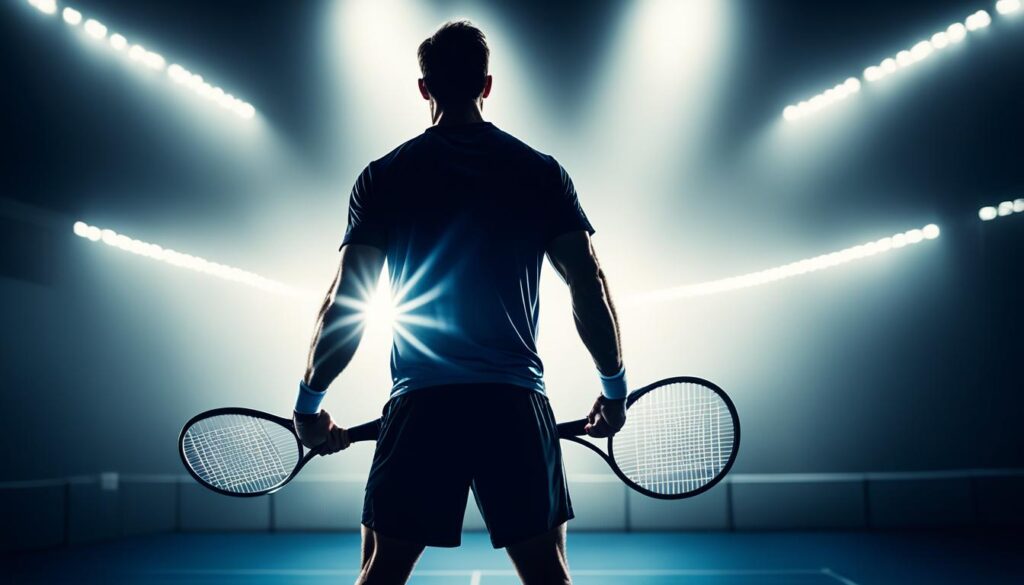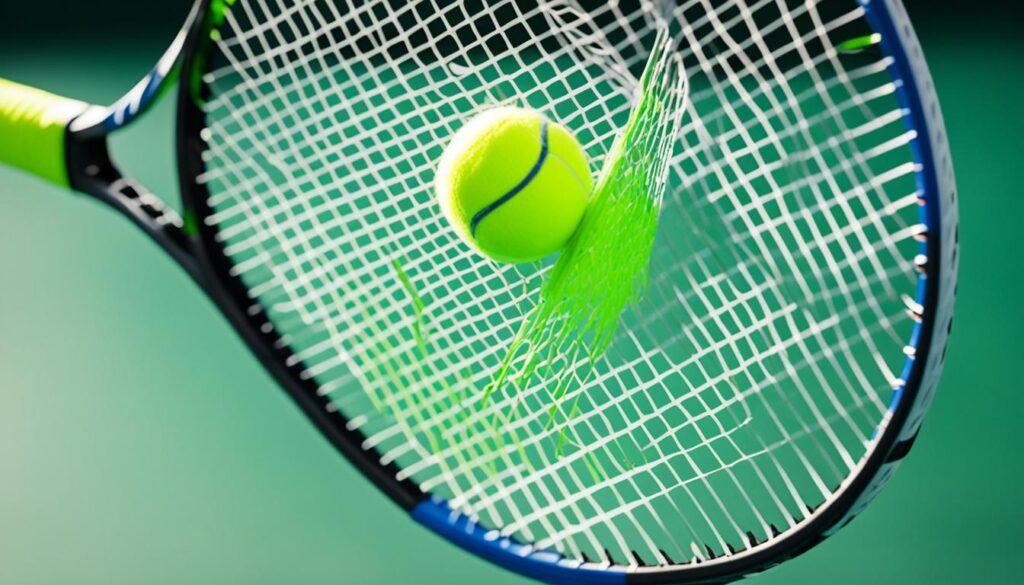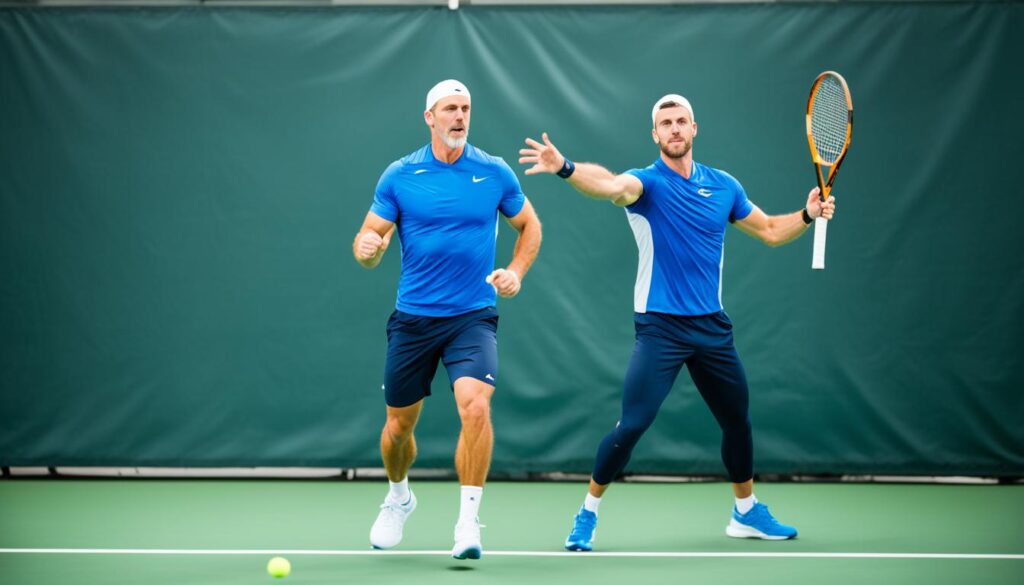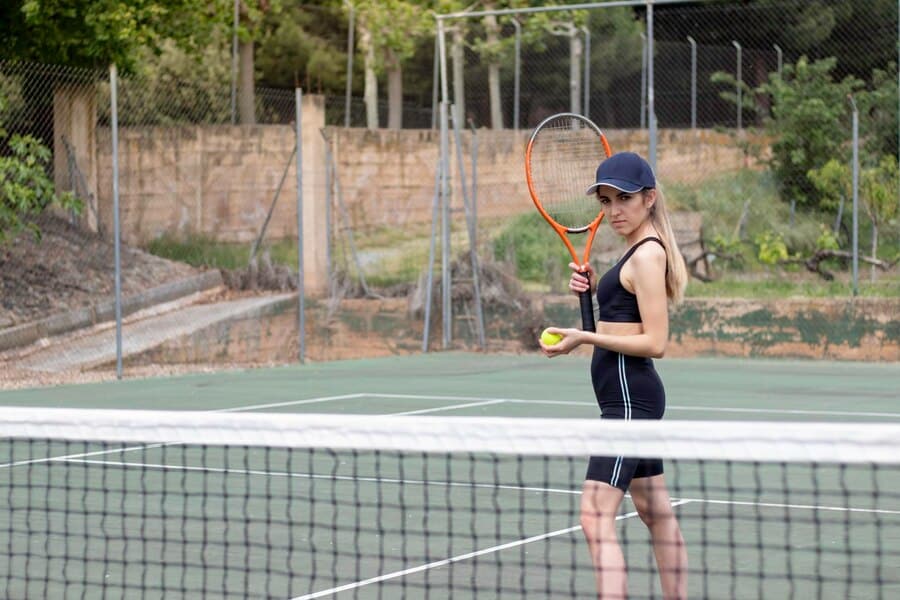Welcome to our comprehensive guide on mastering indoor tennis! Whether you’re a beginner or an experienced player, this article will provide you with valuable techniques and strategies to elevate your game on the indoor tennis court. From mastering the fundamentals of grips, footwork, and swing techniques to overcoming mental barriers and developing a winning mindset, we’ve got you covered. Let’s dive in!
Key Takeaways:
- Understanding and practicing proper grips, footwork, and swing techniques are crucial for success in indoor tennis.
- Avoid common mistakes such as holding the racket too tightly, standing too close to the ball, and having improper footwork.
- Building strength and endurance through regular cardiovascular exercise, strength training, and agility drills can significantly improve your performance on the court.
- Focus on improving your serve and return shots by mastering techniques, maintaining mental focus, and anticipating the ball’s trajectory.
- Prioritize injury prevention by implementing a proper warm-up and stretching routine, including dynamic stretches and light cardio activities.
Understanding the Basics: Grips, Footwork, and Swing Techniques
As an adult player, mastering the fundamentals of grips, footwork, and swing techniques is essential for excelling in indoor tennis. Developing a deep understanding of these foundational skills will not only enhance your performance but also help you gain a competitive edge on the court.
Experimenting with Grips
The grip is one of the most essential aspects of your tennis technique. By experimenting with different grips, you can find the one that feels most comfortable and allows for optimal control and power. For example, the continental grip is commonly used for serves and volleys, while the eastern grip is better suited for forehand shots. Take the time to practice and familiarize yourself with different grips to find the right one for each stroke.
Mastering Footwork
Footwork is often underestimated but plays a crucial role in your overall game. Good footwork enables efficient movement on the court, allowing you to reach the ball with ease and maintain a balanced position for accurate shots. Practice proper footwork by focusing on quick and light movements, staying on the balls of your feet, and using small steps for adjustments. A solid foundation of footwork will greatly improve your agility and court coverage.
Perfecting Swing Techniques
Swing techniques are vital for generating power and precision in your shots. Whether it’s the forehand, backhand, volley, or serve, each stroke requires a specific swing motion. Focus on maintaining a relaxed grip, using a smooth and fluid action, and following through with each shot. Remember to emphasize proper technique over excessive power, as control and accuracy are paramount in indoor tennis.
“The key to success in indoor tennis lies in understanding and mastering the basic grips, footwork, and swing techniques. These fundamentals provide a solid foundation for players to build upon and unlock their full potential on the court.” – Serena Williams, Professional Tennis Player
Incorporating these techniques into your training regimen and practice sessions will undoubtedly elevate your indoor tennis game. Remember, proficiency in grips, footwork, and swing techniques is an ongoing process that requires dedication, repetition, and continuous refinement. By honing these fundamentals, you’ll be well-equipped to handle any challenge and achieve success in indoor tennis.
Common Mistakes Adult Beginners Make and How to Avoid Them

When it comes to indoor tennis, adult beginners often find themselves struggling due to some common mistakes. By identifying these errors and making the necessary adjustments, beginners can improve their performance on the court. Let’s take a closer look at the most prevalent mistakes and learn how to avoid them.
1. Relaxed Grip
A common mistake among beginners is holding the racket too tightly. A relaxed grip allows for better control and flexibility during shots. Remember to maintain a firm yet comfortable grip to maximize your swing and achieve optimal power and accuracy.
2. Standing Too Close
Another mistake beginners tend to make is standing too close to the ball. This often results in missed shots or off-balance swings. To avoid this, maintain a proper distance from the ball, giving yourself enough room to execute your shots effectively. Find the right positioning that allows for a comfortable reach and helps maintain balance throughout the match.
3. Improper Footwork
Footwork plays a crucial role in indoor tennis, and beginners often neglect its importance. Improper footwork can lead to missed shots and difficulty in reaching the ball. Focus on maintaining a good base by staying on the balls of your feet and being light on your toes. This will enhance your speed and agility, enabling you to move swiftly across the court.
4. Improper Body Position
Having incorrect body positioning is another mistake that beginners make. Your body position should be balanced and aligned, allowing for efficient movement and stroke execution. Avoid leaning too far forward or backward and maintain a neutral stance. This will provide stability and control during your shots.
By addressing and avoiding these common mistakes, adult beginners can significantly improve their indoor tennis game. Remember, practice and consistency are key to achieving progress and becoming a more confident and skilled player on the court.
| Mistake | Description | How to Avoid |
|---|---|---|
| Relaxed Grip | Holding the racket too tightly | Maintain a firm yet comfortable grip |
| Standing Too Close | Being too close to the ball | Maintain a proper distance from the ball |
| Improper Footwork | Inadequate movement and positioning of feet | Focus on maintaining good footwork technique |
| Improper Body Position | Unbalanced or misaligned body stance | Maintain a balanced and neutral body position |
Building Strength and Endurance for a Better Game

In order to improve your game in indoor tennis, it is essential to build strength and endurance. By incorporating cardiovascular exercise, strength training, agility drills, and activities like yoga or Pilates into your training routine, you can enhance your overall performance on the court. Consistency is key, so make sure to maintain a regular schedule of workouts and tennis practice sessions to see significant improvements in your physical capabilities.
The combination of cardiovascular exercise and strength training is particularly effective for increasing your strength and endurance. Cardiovascular exercises, such as running or cycling, help to improve your heart and lung function, allowing you to sustain longer, more intense rallies during matches. Strength training, on the other hand, targets specific muscle groups to improve power and stability. This can translate into stronger shots, better balance, and improved movement on the court.
Agility drills are also important for building strength and endurance in indoor tennis. These drills focus on quick movements, change of direction, and balance, which are all essential skills for a successful game. By incorporating agility drills into your training routine, you can improve your footwork, reaction time, and overall agility on the court. This will enable you to reach difficult shots and maintain a strong defensive position, giving you an edge over your opponents.
In addition to cardiovascular exercise and agility drills, activities like yoga or Pilates can further enhance your strength and endurance. These practices focus on improving flexibility, core strength, and body awareness, which are all important for a well-rounded game. Yoga and Pilates can help improve your balance, stability, and range of motion, allowing you to move more efficiently and reduce the risk of injuries.
By incorporating these various training methods into your routine, you can build the strength and endurance necessary for a better game in indoor tennis. Remember to stay consistent, listen to your body, and gradually increase the intensity and duration of your workouts to avoid overexertion. With dedication and perseverance, you can take your game to the next level and achieve success on the indoor tennis court.
Stay Active, Stay Competitive
An active lifestyle is crucial for improving your performance in indoor tennis. Regular cardiovascular exercise, strength training, agility drills, and activities like yoga or Pilates can help you build the strength and endurance necessary for a better game. Make sure to create a balanced workout routine that incorporates these various elements to maximize your results. Stay committed and motivated, and you’ll see the improvements both on and off the court.
Improving Your Serve and Return Shots

A player’s serve and return shots are vital aspects of indoor tennis. Developing a strong serve requires focusing on technique, including a consistent toss and smooth swing motion. By mastering these elements, players can increase the effectiveness of their serves, putting pressure on their opponents and gaining a competitive edge on the court.
When it comes to return shots, there are several key factors to consider. Staying light on your feet allows for quick reactions and better positioning to return the ball effectively. Maintaining mental focus throughout the point helps in anticipating the ball’s trajectory, allowing you to react swiftly and strategically.
Practice is essential in honing your serve and return shots. Consistency in practice sessions allows you to develop muscle memory and fine-tune your technique. Through regular repetition, your movements become more fluid and your shots more precise.
To summarize:
- Focusing on serving technique, including a consistent toss and smooth swing motion, improves your serve.
- Staying light on your feet and maintaining mental focus will enhance your return shots.
- Practice and consistency are key to mastering these skills.
Staying Injury-Free: Tips for Proper Warm-Up and Stretching

Prioritizing injury prevention is crucial for adult tennis players. To minimize the risk of strains and sprains, it is essential to establish and follow a proper warm-up and stretching routine.
Before playing, start with dynamic stretches to prepare your muscles for activity. These are active movements that help increase blood flow and improve flexibility. Examples of dynamic stretches include leg swings, arm circles, and torso rotations. Performing dynamic stretches before playing tennis can help reduce the likelihood of muscle imbalances and injuries.
After playing, it is important to engage in static stretches. Static stretches involve holding a position for a set amount of time, allowing the muscles to relax and lengthen. By incorporating static stretches into your post-tennis routine, you can improve flexibility, reduce muscle soreness, and enhance recovery.
Additionally, including light cardio activities in your warm-up routine can further prepare your body for the demands of tennis. Activities like brisk walking, jogging, or cycling for 5-10 minutes can help increase heart rate and warm up the muscles.
When warming up, focus on major muscle groups used in tennis, such as the shoulders, hips, and legs. Performing exercises like arm circles, hip rotations, and lunges can activate these muscle groups and improve overall flexibility and balance.
Hydration is vital to prevent muscle cramps and maintain optimal performance. Remember to drink water before, during, and after playing tennis to stay properly hydrated.
Lastly, listen to your body’s signals. Pay attention to any discomfort or pain during warm-up or stretching exercises. If something feels off, it’s important to address it before engaging in intense physical activity.
“Proper warm-up and stretching routines are essential to prevent injuries. By incorporating dynamic stretches, light cardio, and static stretches into your pre and post-tennis routine, you can enhance flexibility, balance, and reduce the risk of strains and sprains.” – Dr. Sarah Thompson, Sports Medicine Specialist
By following these tips for proper warm-up and stretching, adult tennis players can increase their chances of staying injury-free and enjoying a fulfilling tennis experience. Remember, prevention is always better than cure.
Conclusion
Mastering indoor tennis requires a combination of techniques, strategies, and physical fitness. Understanding the fundamentals of grips, footwork, and swing techniques is crucial for success on the court. By avoiding common mistakes such as using a relaxed grip, standing too close to the ball, and improper footwork or body position, players can improve their performance.
Building strength and endurance through regular workouts and incorporating activities like cardiovascular exercise, strength training, and agility drills is vital for maintaining a winning mindset and staying competitive in indoor tennis. Consistency is key, both in training and actual tennis practice sessions.
Fine-tuning serve and return shots is essential for dominating indoor tennis. Paying attention to a consistent toss, smooth swing motion, mental focus, and anticipation can significantly improve serve efficiency and return shot accuracy. Dedicate time to practice and develop these skills.
While striving for excellence, it’s important to prioritize injury prevention. Proper warm-up, including dynamic stretches and light cardio activities, prepares the body for performance while reducing the risk of strains and sprains. Incorporating static stretches after play helps maintain flexibility. Remember to stay hydrated and listen to the body’s signals.
FAQs
Q: What can I expect at an indoor tennis facility?
A: Indoor tennis facilities typically offer court reservations, lessons, league play, and programs for players of all ages and skill levels.
Q: How do I reserve court time at an indoor tennis facility?
A: Court time can usually be reserved either online, by phone, or in person at the facility’s office.
Q: Are there tennis clinics available for both juniors and adults?
A: Yes, many indoor tennis facilities offer clinics for players of all ages, including both juniors and adults.
Q: Can I host a tennis party at an indoor tennis facility?
A: Yes, indoor tennis facilities often offer the option to host parties and events on their courts.
Q: Is court time available for reservation year-round?
A: Yes, indoor tennis facilities typically offer court reservations throughout the year, regardless of the season.
Q: Are private lessons also available at indoor tennis facilities?
A: Yes, many indoor tennis facilities offer private lessons for individuals looking to improve their game.
Q: Do indoor tennis facilities also offer services for families?
A: Yes, some facilities provide options for family programs, such as group lessons or family court reservations.
